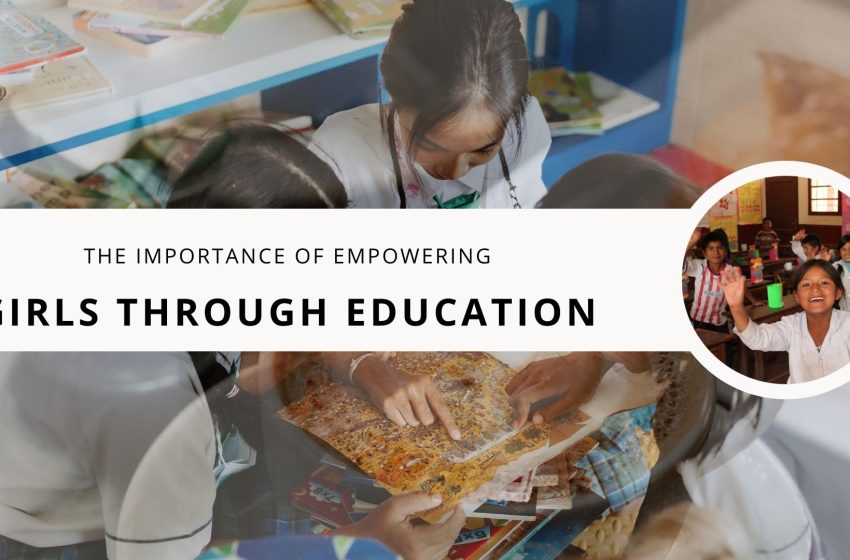The Importance of Empowering Girls Through Education

Education is a fundamental right for every child, yet in many parts of the world, including India, girls still face challenges in accessing quality education. Despite progress, many girls are left behind due to cultural, economic, and social barriers. This blog explores the importance of empowering girls through education, with a special focus on how initiatives such as STEM education for girls in India and education schemes for girls in India play a critical role in shaping the future of young women.
Why Education is Essential for Girls
Education empowers girls to become more independent, boosts their confidence, and provides them with opportunities for a better life. Educated girls are more likely to participate in the workforce, marry later, and contribute to the social and economic growth of their communities. The ripple effect of educating girls extends to future generations, creating a cycle of positive change.
Breaking the Cycle of Poverty
One of the most significant impacts of educating girls is the potential to break the cycle of poverty. When girls receive an education, they gain the tools needed to improve their financial stability, make informed health decisions, and uplift their families. Education serves as a powerful tool to help reduce poverty and build stronger communities.
STEM Education for Girls in India
STEM (Science, Technology, Engineering, and Mathematics) education is an area where girls have traditionally been underrepresented. However, with the advent of STEM education for girls in India, many initiatives are aiming to bridge this gap and provide girls with the skills needed to excel in fields that have been dominated by men. Encouraging girls to pursue STEM fields is not only beneficial for them individually but also critical for the nation’s development.
Building Confidence in STEM Fields
Exposure to STEM subjects at a young age helps build confidence in girls, showing them that they, too, can excel in mathematics, science, and technology. It’s essential to create an environment where girls are encouraged to explore these fields without facing societal pressures that discourage them from pursuing careers in these areas.
Government-Led Education Schemes for Girls in India
The Indian government has implemented several education schemes for girls in India aimed at improving access to education and reducing gender disparity in schools. Schemes such as Beti Bachao, Beti Padhao (Save the Daughter, Educate the Daughter) focus on encouraging families to prioritize girls’ education. These initiatives are crucial for creating an equal playing field for both girls and boys.
The Role of Scholarships and Incentives
Scholarship programs and financial incentives play a vital role in making education more accessible to girls, especially in rural and underserved areas. By offering these incentives, the government encourages families to enroll their daughters in school and keep them there until they complete their education.
Challenges Girls Face in Accessing Education
Despite the progress made in promoting education for girls, challenges still exist. Cultural norms, economic barriers, and lack of infrastructure often prevent girls from attending school or completing their education. Many girls, especially in rural areas, are expected to marry early or take on household responsibilities, which can hinder their ability to continue their education.
Addressing Cultural and Social Barriers
Changing cultural perceptions about the value of girls’ education is essential to ensure that more girls can access education. Community engagement and awareness campaigns are effective in shifting mindsets and encouraging parents to prioritize their daughters’ education.
The Role of Non-Governmental Organizations (NGOs)
Non-governmental organizations (NGOs) play a crucial role in filling the gaps left by government initiatives. Many NGOs are working tirelessly to support girls’ education by providing scholarships, mentorship, and advocacy programs. These organizations often focus on reaching the most marginalized communities, ensuring that girls from disadvantaged backgrounds are not left behind.
Mentorship and Role Models
One effective way to inspire girls to pursue education is by providing them with role models and mentors. Successful women in various fields can encourage girls to dream bigger and pursue careers they may not have considered possible. Mentorship programs help girls navigate their educational journeys and overcome challenges they may face along the way.
The Impact of Educating Girls on Society
When girls are educated, the benefits extend far beyond the individual. Educated women are more likely to contribute to their communities, participate in the workforce, and advocate for the education of future generations. The societal impact of educating girls is profound, as it promotes gender equality, reduces poverty, and fosters economic growth.
Economic Growth and Development
Countries that invest in educating girls tend to see more significant economic growth. Educated women are better equipped to contribute to the workforce, start businesses, and take on leadership roles. This leads to a more robust economy and a more equitable society, where both men and women can contribute to development.
The Future of Girls’ Education in India
The future of girls’ education in India is promising, with continued efforts from the government, NGOs, and community leaders. As more attention is given to issues like gender equality in education and access to quality learning resources, more girls will have the opportunity to pursue their dreams. However, to ensure lasting change, it is essential to maintain momentum and continue advocating for girls’ education at every level of society.
Embracing Technology in Education
The rise of digital education platforms presents a unique opportunity to make education more accessible to girls, particularly in remote areas. By providing online resources and learning tools, technology can help bridge the gap for students who may not have access to traditional classrooms. Digital education has the potential to revolutionize learning for girls across India.
Conclusion
Empowering girls through education is not just about ensuring their future success—it’s about transforming communities and promoting social and economic equality. Initiatives like STEM education for girls in India and education schemes for girls in India are vital for bridging the gender gap and providing girls with the opportunities they deserve. As a society, it is our responsibility to ensure that every girl, regardless of her background, has access to the education she needs to thrive. By investing in girls’ education, we are investing in the future of our nation.

